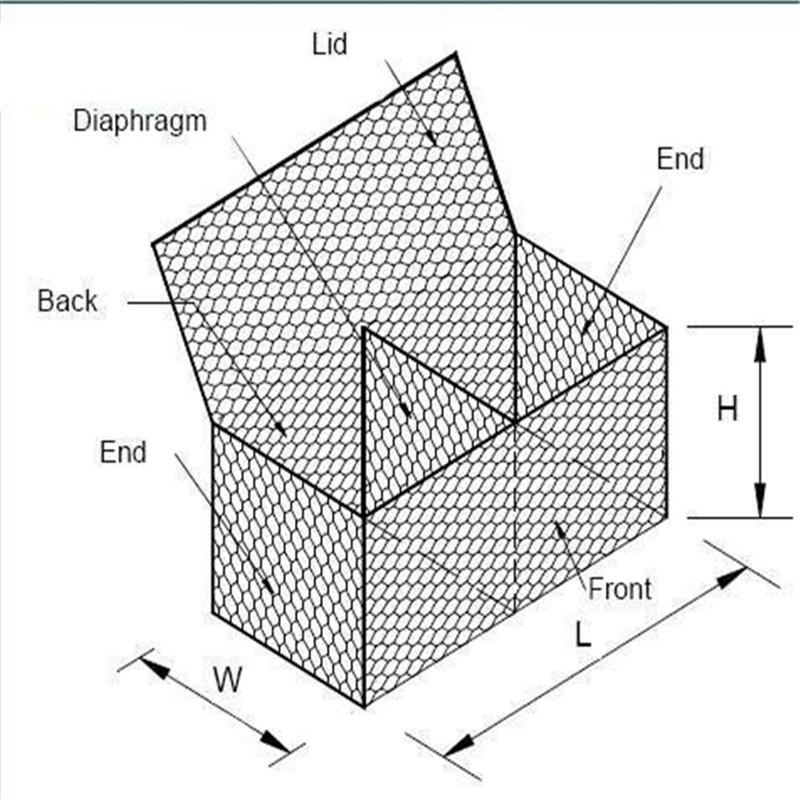Like the idea of keeping fowl and want them to safely forage on your grassed area? Then build this chook tractor! It’s basically a coop on wheels, with an open bottom, and is light enough to move to a new patch of grass every day. By building a mobile henhouse you can control where your chickens scratch, dig, eat weeds and fertilise without ruining your whole lawn. And, if comfy, the hens will deliver quality eggs almost every day. This A-frame chicken coop costs about $200 in materials and should take about a weekend to make. The structure is simple with internal angles all 60° and only a saw, protractor, pencil, hammer and drill required, although a sliding bevel may be handy. This design can be easily adapted for a rabbit or guinea pig hutch – just add a ramp to the nesting level.
* Uprights 70 x 35 x 1185mm treated pine (6) Expanded Metal Harga

* Cross members 70 x 35 x 450mm treated pine (3)
* Bottom rails 70 x 35 x 1800mm treated pine (2)
* Top rails 70 x 35 x 848mm treated pine (2)
* Cap 90 x 19 x 1800mm treated pine decking
* Triangular panels 560 x 485 x 3mm exterior plywood
* Perch 32mm dia x 848mm hardwood dowel
* End rail 70 x 35 x 1190mm treated pine
* Axle rail 70 x 35 x 1200mm treated pine
* Outer battens 100 x 900 x 12mm exterior plywood (2)
* Inner battens 100 x 848 x 12mm exterior plywood (4)
* Handle battens 100 x 1100 x 12mm exterior plywood (2)
* Top panels 455 x 900 x 12mm exterior plywood (4)
* End hatch 1130 x 490 x 12mm exterior plywood
* Nesting box floor 917 x 240 x 12mm exterior plywood
Protractor; 125 and 100mm batten screws; 100mm wood screws; 25mm galvanised flathead and U-nails; Dulux Weathershield Low Sheen Acrylic in Indian Red; 12.7 x 12.7 x 0.7mm aviary mesh (90cm x 5m roll); 2 x 125mm wheels; two 75mm x 13mm coach bolts; 40 and 20mm screws; twelve 20 x 6mm countersunk metal thread screws and nuts; four 75mm zinc-plated strap hinges; two 100mm zinc-plated T-hinges; four 100mm hasp and staples; 63mm barrel bolt
Step 1 Start by building the A-frames. To form the top inside angle of 60º between the uprights (A), mark in a 30º mitre to the length of the timber from the top corner of 1 of the uprights, using a protractor or sliding bevel if you have one. Combining 2 30º angles will give you the 60º internal angle.
Step 2 Clamp the upright to the bench and cut the acute angle. At the bottom, cut the base at 60º to the length of the rafter to give a level footing. The final length of the upright should be 1185mm. Use this as a pattern to mark and cut the other 5 uprights. Also cut the cross members (B) to length with opposite 60º cuts at each end.
Step 3 Get out the frame on a bench with the cross member long points 450mm down from the inside of the apex. Predrill clearance holes in the uprights to screw the frame together. Screw together the top first, using 125mm batten screws, adjust the position of the cross member so that the bottom edge is on the 450mm marks, then screw in from both sides. This will give you the basic A-frame. Repeat the process to make 2 more A-frames.
Step 4 Mark in a 50mm-wide flat surface at the top of each A-frame by sliding the centre and 90º mark of the protractor up the mitre joint of the frame until you have 25mm to each side of the mitre. Pencil in, then cut with a hand saw.
Step 5 Set out the position of the A-frames on the bottom rails (C), with 1 frame at each end and the third in the centre. Predrill clearance holes 20mm from the inside edge of the rails.Clamp an A-frame to the bench and screw the rails onto the underside of the frame uprights using 100mm batten screws, after predrilling. The rails should then be flush with the outer edge of the uprights.
Step 6 Cut the 2 top rails (D) and screw between the apexes of the A-frames, centred over the mitre joint and flush at the top. When screwing, use 2 screws per joint, offsetting to each side of the mitre joint. The final 2 screws in the centre will have to be skewed in from the opposite side. For these, use 100mm wood screws. Add the cap (E) on top, screwing down into the rails.
Step 7 Enclose the top ends of the chicken coop with a pair of triangular panels (F). To make these, find the centre of the top, join to the bottom corners and cut to form equilateral triangles with 560mm sides. Cut off the top to match frames, sand the edges smooth and round corners slightly. Glue and nail to the top ends of the coop
Step 8 Now’s the ideal time to paint the coop, before the mesh goes on. It’s also a good idea to cut all the other battens and panels so they can be painted as well. Sand all the components and the coop, wipe clean and then apply 2 coats of exterior acrylic red paint. Allow to dry.
Step 9 Cut the perch (G) for the chickens to roost on. Don’t waste time painting this as the chickens will scratch it in no time, and when screwing in place, don’t bother using glue as it may need to be replaced from time to time. A branch from a tree could be used instead. Screw in place between the frames on the cross-members. Tighten firmly, otherwise your chickens may quickly turn into Canadian log rollers.
Step 10 Cut the aviary mesh into 2 pieces of 1790 x 670mm with snips. Turn the coop so 1 of the bottom rails points up, then attach the mesh to the rail with a U-nail at each end and 1 in the middle.
Step 11 Then stretch down and nail to the centre frame, before stretching and nailing to the 2 end frames. Drive in further U-nails at about 100mm intervals to hold securely. Repeat for other side.
Step 12 For the mesh end, start with a piece of mesh 1110 x 550mm, and hold in place. To minimise sharp wire ends, use your snips to cut up the sides in a step-like manner, then nail in place with more U-nails. At this stage the bottom of the mesh will be loose.
Step 13 Screw the end and axle rails (H,I) to the 2 ends. The axle rail is slightly longer than the end rail and is fixed to the end with mesh. It’s also slightly wider as it will have wheels, which need to clear the sides of the coop.
Step 14 Screw a pair of 125mm wheels to the centre of the ends of the axle rail using 75mm coach bolts. Then secure the bottom of the end wire to the rail with U-nails. If you’re worried about foxes or other predators in your area getting under the coop, you can also put wire along the bottom. Keep in mind that a recent survey of the poultry community found that most chooks prefer there to be no wire.
Step 15 Measure 455mm down the uprights from the underside of the cap on the fixed panel side. Screw on a batten (J) with its top edge on the marks and only covering half of the centre frame. Then clamp on and screw in place an inner batten (K) to sandwich the wire between the battens. Repeat for the other side, but here set the top of the batten down 460mm to allow a little extra to let the hatches open freely.
Step 16 Repeat the process for fixing the handle battens (L) into place and again screw the inner battens to the back of the handles to fix the wire mesh in place.
Step 17 To afford your chickens some protection from exposure to the elements, screw the fixed panels (M) in place on the side where the battens are higher up the uprights. These panels will also help brace the structure. If you live in an area where you need more protection from rain, wind or sun, simply add more plywood to the sides.
Step 18 Place the hinged panels in position on the battens, then screw 2 of the 75mm strap hinges for each hatch to the battens, about 100mm in from each end.
Step 19 Once fixed, drill through the top holes with a 6mm bit, then secure with countersunk metal thread screws and nuts to hold in the thin plywood. The plywood is simply not thick enough to be able to use normal wood screws. Next, add a pair of small hasp-and-staple latches to each door to hold them shut.
Step 20 To cut the end hatch (N), find the centre of the top edge and measure 288mm to each side. Mark in the 2 triangles and then cut to shape. Fix to the ends of the frame with 2 T-hinges, screwing down into the end rail. Add a small barrel bolt at the top to hold shut.
Step 21 Your chickens need somewhere to lay their eggs, so add a nesting box. This is just a removable shelf (O) made in 2 parts so it’s easy to lift in and out for cleaning. Cut a 65 x 35mm notch at each end on the outer sides so it will slot into place. If you discover that the birds won’t get into the nest, add a ramp from the ground. Touch up the paint as needed. Add a water supply and feed bowl, straw in the nesting area and dig out the omelette recipes – the average hen lays about 300 eggs a year!
Plus, your chance to win
Plus, your chance to win

Wire Mesh Cladding Treat yourself to a subscription-Save up to 25%